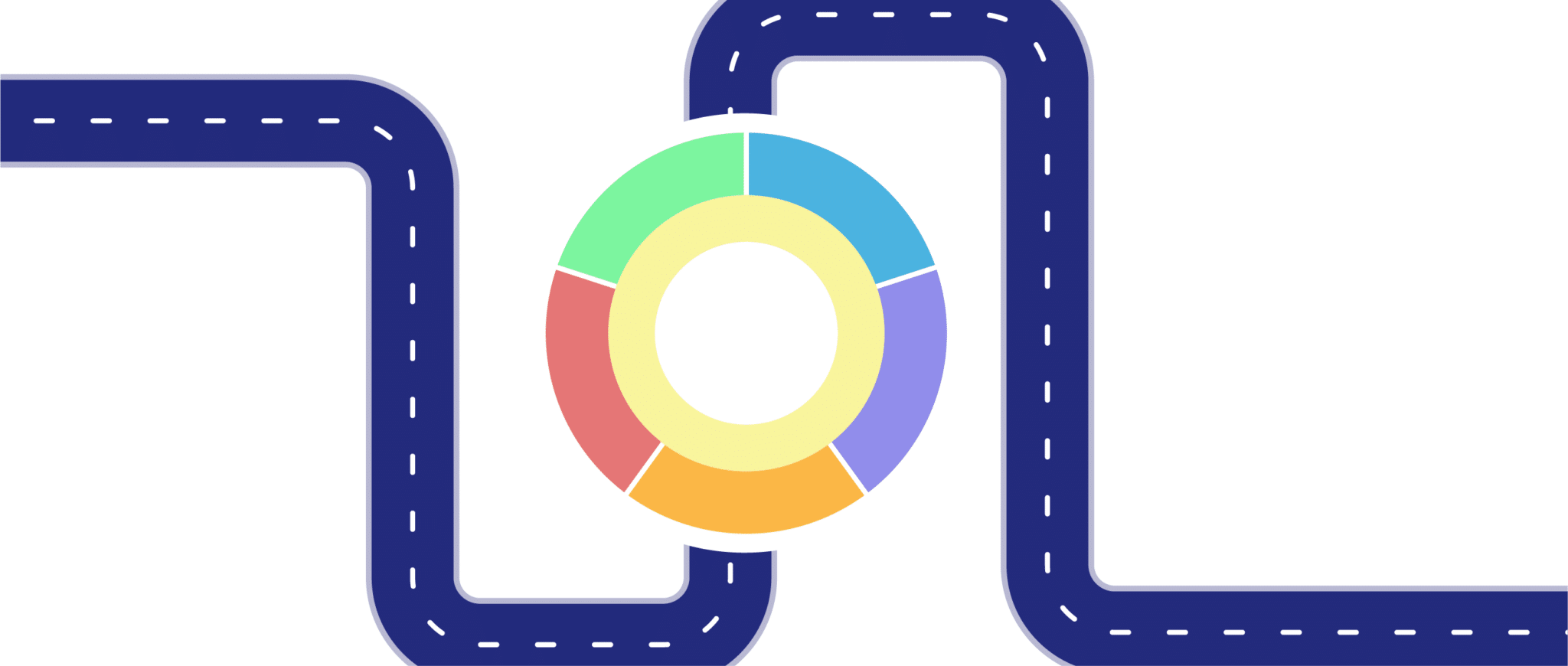Fundamentals of NIST CSF 2.0
The National Institute of Standards and Technology (NIST) is widely recognized as a leader in cybersecurity. Their Cybersecurity Framework (CSF) is an essential tool for organizations looking to enhance their cybersecurity posture. In this article, we will delve into the fundamentals of NIST CSF 2.0, exploring its basics, applications, controls, and key updates. By the end, you will have a comprehensive understanding of this crucial framework.
Understanding the Basics of NIST CSF
Before we dive into the specifics of NIST CSF 2.0, let’s start with a brief overview of its basics. The NIST CSF is a voluntary framework that provides guidance on how organizations can manage and improve their cybersecurity risk management efforts. It is a flexible and adaptable approach that helps organizations align their cybersecurity initiatives with their business goals.
The framework consists of three distinct components: the Core, the Profile, and the Implementation Tiers. The Core is a set of cybersecurity activities, outcomes, and informative references organized into five functions: Identify, Protect, Detect, Respond, and Recover. The Profile represents an organization’s specific cybersecurity outcomes and is created by aligning the Core with the organization’s business requirements. Implementation Tiers help organizations understand and measure the maturity of their cybersecurity practices.
The Core of the NIST CSF provides organizations with a comprehensive set of guidelines and best practices for managing cybersecurity risks.
- The Identify function helps organizations understand their assets, risks, and vulnerabilities. It involves activities such as asset management, risk assessment, and risk management strategy development.
- The Protect function focuses on implementing safeguards to protect critical assets and data. It includes activities such as access control, awareness training, and data protection measures.
- The Detect function aims to identify cybersecurity events and anomalies in a timely manner. It involves activities such as continuous monitoring, anomaly detection, and incident detection and response planning.
- The Respond function focuses on taking appropriate actions to respond to detected cybersecurity incidents. It includes activities such as incident response planning, communication, and mitigation.
- The Recover function aims to restore normal operations and services after a cybersecurity incident. It involves activities such as recovery planning, improvements, and lessons learned.
Exploring the Applications of NIST CSF
One of the key strengths of NIST CSF is its broad applicability. It can be used by organizations of all sizes, across various industries. Whether you are a small business or a multinational corporation, the framework offers a comprehensive approach to managing cybersecurity risks. It provides organizations with a common language to communicate their cybersecurity requirements and establish a baseline for their cybersecurity posture.
Moreover, NIST CSF can be effectively utilized throughout the entire lifecycle of an organization, from the initial risk assessment to the ongoing monitoring and improvement of cybersecurity practices. By implementing NIST CSF, organizations can proactively identify and mitigate risks, protect critical assets, detect and respond to threats, and recover from cybersecurity incidents.
Implementing NIST CSF can also help organizations enhance their cybersecurity resilience. By aligning their cybersecurity initiatives with the framework’s guidelines, organizations can strengthen their ability to withstand and recover from cyber attacks. This can lead to increased customer trust, improved business continuity, and reduced financial losses associated with cybersecurity incidents.
Furthermore, NIST CSF can assist organizations in meeting regulatory requirements and industry standards. Many regulatory bodies and industry associations recognize the framework as a reliable and comprehensive approach to cybersecurity risk management. By adopting NIST CSF, organizations can demonstrate their commitment to cybersecurity and ensure compliance with relevant regulations and standards.
A Closer Look at the Controls in NIST CSF
Within the NIST CSF, controls play a vital role in helping organizations achieve their desired cybersecurity outcomes. Controls provide specific actions and safeguards that an organization should implement to address particular cybersecurity risks. The framework offers an extensive catalog of controls that organizations can selectively adopt based on their specific needs.
The controls are categorized into various categories such as access control, incident response, risk assessment, and many more. Each control is accompanied by informative references that offer additional guidance on its implementation. Organizations can customize their control selection by considering factors such as their business environment, regulatory requirements, and risk appetite.
For example, in the access control category, organizations can choose controls such as user identification and authentication, access control policies, and secure remote access. These controls help organizations ensure that only authorized individuals have access to their systems and data, reducing the risk of unauthorized access and data breaches.
In the incident response category, organizations can select controls such as incident response planning, incident detection and analysis, and incident response coordination. These controls enable organizations to effectively respond to cybersecurity incidents, minimize their impact, and restore normal operations as quickly as possible.
By implementing the appropriate controls from the NIST CSF catalog, organizations can establish a robust cybersecurity posture and enhance their resilience against cyber threats. Regular review and assessment of controls can help organizations identify gaps and areas for improvement, ensuring continuous enhancement of their cybersecurity practices.
NIST CSF 1.1 vs NIST CSF 2.0: What’s New?
With the release of NIST CSF 2.0, organizations are eager to understand the key updates and improvements over its predecessor, NIST CSF 1.1. Let’s explore the significant changes that NIST has introduced in this latest version.
The Release Date of NIST CSF 2.0
NIST CSF 2.0 was released on February 26, 2024, following extensive collaboration with industry stakeholders. The new version incorporates feedback and lessons learned from the previous iteration, ensuring that it remains relevant and effective in addressing the evolving cybersecurity landscape.
Key Updates in NIST CSF 2.0
NIST CSF 2.0 brings several notable updates that enhance the framework’s usability and comprehensiveness:
- Enhanced emphasis on risk management: The new version places a stronger emphasis on risk management, encouraging organizations to analyze and prioritize their cybersecurity risks based on business impacts and available resources.
- Expanded informative references: NIST has updated the informative references to provide organizations with more comprehensive and up-to-date guidance on cybersecurity best practices.
- Improved usability and flexibility: The framework has been refined to enhance its practical application, making it easier for organizations to align their cybersecurity efforts with their business objectives.
Analyzing the Implications of the Changes
The updates in NIST CSF 2.0 have significant implications for organizations. With the enhanced focus on risk management, organizations are empowered to make informed decisions and allocate resources to address their most critical cybersecurity risks. The expanded informative references provide organizations with a wealth of knowledge, helping them stay current with the latest cybersecurity trends and best practices.
The improved usability and flexibility of NIST CSF 2.0 enable organizations to tailor the framework to their unique needs and circumstances. This ensures that organizations can adapt their cybersecurity practices to evolving threats and business requirements, effectively mitigating risks and protecting their valuable assets.
Realignment of NIST CSF 2.0
In NIST CSF 2.0, the framework has been realigned to clarify the relationship between the Core, Profile, and Implementation Tiers. This realignment aims to provide organizations with a more intuitive structure and better guidance on how to leverage the framework effectively.
The Core now serves as the central element of the framework, emphasizing the importance of the five functions. The Profile is now positioned as a standalone component that organizations can use to document their specific cybersecurity objectives and outcomes. The Implementation Tiers remain largely unchanged, helping organizations assess where they stand in terms of cybersecurity maturity.
The Importance of the Govern Function in NIST CSF
While all six functions in NIST CSF are crucial, the Govern function deserves special attention. The Govern function establishes the strategic, policy-level approach to managing cybersecurity risk. It encompasses activities such as establishing governance structures, managing legal and regulatory requirements, and facilitating communication and coordination across the organization.
By properly implementing the Govern function, organizations can ensure that cybersecurity risk management becomes an integral part of their overall governance strategy. This enables a top-down approach to cybersecurity, fostering a culture of security and accountability throughout the organization.
In conclusion, NIST CSF 2.0 is a powerful framework that equips organizations with the tools and guidelines necessary to strengthen their cybersecurity posture. By understanding the basics, exploring its applications, delving into the controls, and examining the key updates, organizations can effectively leverage NIST CSF 2.0 to manage and mitigate cybersecurity risks. Remember, cybersecurity is an ongoing effort, and NIST CSF provides a solid foundation for organizations to continuously improve and adapt their cybersecurity practices in an ever-changing threat landscape.
Build a NIST CSF 2.0 Program using Enclave
As you strive to enhance your cybersecurity posture with the insights from NIST CSF 2.0, consider the advanced capabilities of Enclave. Our micro-segmentation tool is designed to seamlessly align with the NIST framework, offering you a robust solution for asset discovery, enhanced visibility, and real-time vulnerability scanning. With Enclave, you can effortlessly manage and prioritize your network assets and vulnerabilities, integrate with existing tools, and maintain compliance with ease. Our intuitive visual mapping and collaboration features support your cybersecurity governance, ensuring that you stay ahead of threats in a dynamic landscape.
Ready to fortify your cybersecurity strategy with Enclave?
Contact Us today to learn more about how we can help you create a secure and resilient network environment.

 N. Hanacek/NIST
N. Hanacek/NIST
